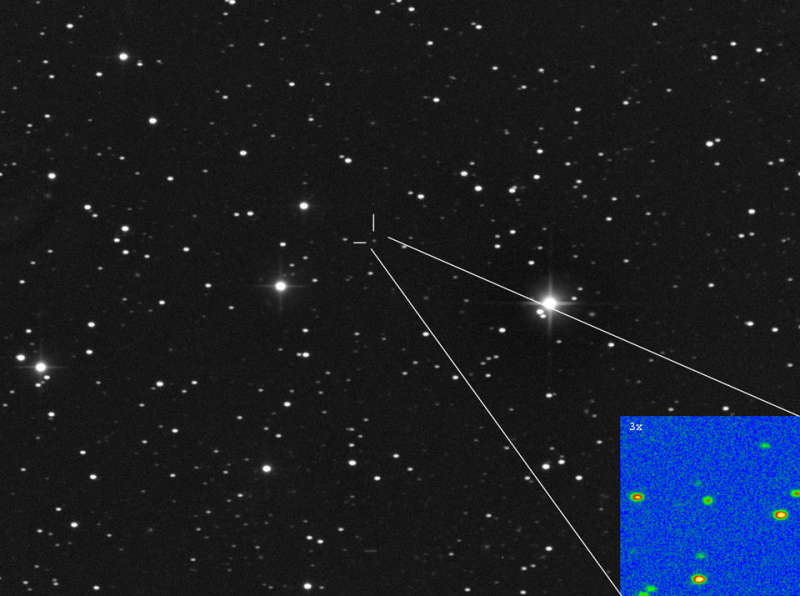
|
Credit & Copyright: Ligustri Rolando
Explanation:
Could this dim spot brighten into one of the
brightest comets
ever?
It's possible.
Alternatively,
the comet could break up
when it gets closer to the Sun, or brighten much
more modestly.
Sky enthusiasts the world over are
all
abuzz, though, from the more
optimistic speculations -- that
the newly discovered
C/2012 S1 (ISON) could develop
a
spectacular tail or briefly approach the
brightness of the full Moon toward the end of 2013.
Comet ISON currently is very faint but is just visible at
magnitude 18 in the
above image.
The comet, discovered just over a week ago from
Russia by
Vitali Nevski (Belarus)
and Artyom Novichonok (Russia), is currently falling toward the Sun
from between the orbits of Jupiter and Saturn.
In early 2013 October it will pass very near Mars and possibly be visible to rovers
and orbiting spacecraft.
Comet ISON appears on course to achieve
sungrazer status as it passes within a solar diameter
of Sun's surface in late 2013 November.
Whatever survives will then pass nearest the Earth in late 2013 December.
Astronomers around the world will be tracking this large dirty snowball closely to
better understand its nature and how it
might evolve
during the next 15 months.
|
January February March April May June July August September October November December |
| ||||||||||||||||||||||||||||||||||||||||||||||||
NASA Web Site Statements, Warnings, and Disclaimers
NASA Official: Jay Norris. Specific rights apply.
A service of: LHEA at NASA / GSFC
& Michigan Tech. U.
Based on Astronomy Picture
Of the Day
Publications with keywords: comet - Solar System
Publications with words: comet - Solar System
See also:
- APOD: 2025 December 1 Á 3I ATLAS: Tails of an Interstellar Comet
- APOD: 2025 November 25 Á Comet Lemmon and the Milky Way
- 3I/ATLAS: A View from Planet Earth
- APOD: 2025 November 17 Á Comet Lemmons Wandering Tail
- APOD: 2025 September 30 Á Comet Lemmon Brightens
- APOD: 2025 September 29 Á Two Camera Comets in One Sky
- APOD: 2025 September 26 Á A SWAN an ATLAS and Mars
